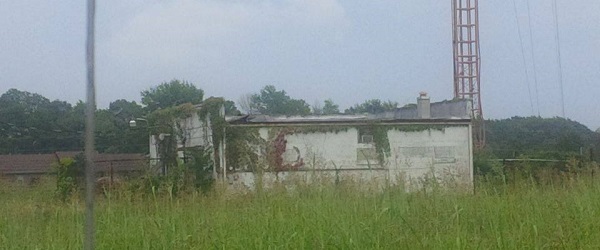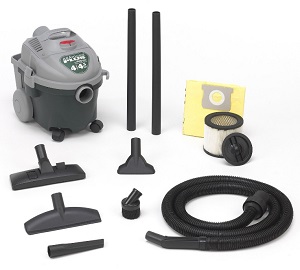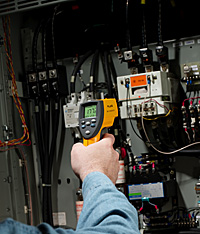
Given the weather we’ve been experiencing worldwide this year, I thought it would be an opportunity to discuss both weatherproofing and maintenance of the transmitter site. I suspect what brought this on was a three-hour power outage I experienced at home last week, as a result of a nearby lightning strike!
Weatherproofing
By weatherproofing the transmitter site, I don’t mean having a leak-proof roof, although that’s certainly desirable. Allowing water to pour in to the building and on to the equipment inside is definitely not a good thing!

No, by weatherproofing, I’m referring to the things you should be doing on a regular basis to ensure your site is ready to handle the day-to-day slings and arrows that Mother Nature tends to throw at buildings located in fields or on mountains, which aren’t regularly manned and only visited on occasion.
I don’t think I’ll talk about grounding a lot in this article – that’s been covered several times and you can find a discussion of it here, along with a webinar on it here, and our whitepaper on the subject here.
First, prompted by my personal experience last week, is your generator, if you’ve got one. Generators are a great thing, as one of my friends said when he saw my Facebook post about our power outage, “Generators are worth their weight in gold in times like these”. However, like most backups, they’re only great if they work when needed! There are some things that should be part of the scheduled maintenance routine for sites and studios that have backup generators. They’re part of the routine for my home generator and, I’m pleased to announce that even after spending the winter outside in an uninsulated shed at -20 degrees C for a good part of the winter, it started right up when I needed it to on Friday.
Here are the basics – as folks come back with additional suggestions and thoughts, I’ll have this article updated. These items will apply whether your generator is a small portable unit or a larger permanent installation.

Fuel: Regardless of fuel type, no generator will run if the tank is dry. Keep the fuel tank full – if you only use it on very rare occasions, it may be necessary to add fuel stabilizer to help reduce breaking down of the fuel (gasoline) or algae growth/water control (diesel).
Filters: Air and fuel filters should be checked on a regular basis and replaced as needed. Air filter maintenance will be determined by your local environment, so you will need to set your own schedule on this.
Testing: Any generator should be started and run for several minutes every few weeks to a month, with a full load test done for quite a bit longer on a regular basis. I do a run test every week for the home generator and a load test once a month, which also allows me to exercise the transfer switch and confirm it works. Your schedule may vary according to your situation, but again, it’s best to find out if it doesn’t start when it is NOT needed right away!
Oil: Depending on the size, make and age of your generator, oil and filter changes can be simple or complex and may be required anywhere between 25 and 75 hours of use. It is a good idea to get in the habit of checking the oil level after each use (wait until the generator cools, giving oil time to settle). Top off as needed and change according to the manufacturer’s schedule.
For large generators, it is a good idea to have the unit checked out by a qualified mechanic at least once a year – preferably before storm season! For smaller, portable units, this may not be necessary, but again, the scheduled tests above need to be done.
It is also a good idea to verify generator output voltage and frequency. Note that some generators do not put out a clean sine wave, so some computer equipment may have issues running. Also, if you are backing-up a high power device, such as a transmitter, ramp up power more slowly if possible – this will apply the load to the generator gradually and won’t cause it to “lug”. Some transmitters (Nautel’s GV and NVlt Series, for example) have “generator ramp mode” as a preset option that will allow you to control the rate at which the transmitter ramps up from zero to the preset power level. If your transmitter has this, it is a good idea to set it up ahead of time, so that when your generator comes on, it doesn’t get stressed.
Next, air handling (very briefly, as this was also covered to an extent in the webinar on extending transmitter life). First, if your site is air conditioned, cleaning the compressor coils and checking coolant levels is a good idea on a fairly regular basis, especially after pollen season finishes. This probably should have been done last month for most of North America, but it bears mentioning. Also, whether your site is air conditioned or not, air filters need to be changed on a regular basis – more so when not air conditioned, but still worthy of note, unless your site is totally closed. Also, it’s a good idea to do a pressure check – to ensure that the transmitter room is positively pressurized. This will help to reduce any dust or moisture coming in through cracks and crevices in the building. This was also discussed in the extending transmitter life webinar. In addition, there was a topic on air handling in a previous Tips ‘n’ Tricks article.
One other note on weather related issues – and overall reliability in general – as mentioned above in generators, having backup systems (redundant STL links, backup transmitters, aux sites and studios) is a wonderful thing, but they are not worth anything if they do not perform when needed. Having a schedule for testing all backup and redundant systems is a necessary part of having them at all – backup transmitters should be started and run for a short time on a regular basis, redundant systems should be checked for proper operation. As well, because backup systems do not operate on a daily basis, there should be a schedule in place to clean them just as often as the main systems, otherwise there will eventually be dust buildup that can often cause problems of its own.
Transmitter Site Maintenance
On maintenance, there are a few items that should be discussed beyond the above – cleaning and hardware being the two biggest. These are frequently overlooked, as we struggle to fit all of our required duties into a full schedule, but both of them go a long way toward keeping equipment (and management) healthy and happy!
 Cleaning schedules will be determined by site considerations; a closed and air conditioned site may only need a good cleaning every few years, where a site bringing in outside air, especially with negative air pressure (exhaust fan with no intake fan, for example), will need to have equipment in the building cleaned on a much more regular basis
Cleaning schedules will be determined by site considerations; a closed and air conditioned site may only need a good cleaning every few years, where a site bringing in outside air, especially with negative air pressure (exhaust fan with no intake fan, for example), will need to have equipment in the building cleaned on a much more regular basis
While the air compressor is frequently a preferred method for cleaning, I tend to try to avoid them – my theory is that compressed air stirs up dust without always removing it, frequently relocating the dust from a place where it wasn’t at risk of causing an arc to a place where it could cause one. My preference is a shop vac, or industrial vacuum, with small nozzle and a brush to loosen dust, then remove it totally from the equipment. Again, how often this needs to be done will be determined by the conditions at the site.
On hardware, especially in AM transmitters and ATUs, cast mica capacitors typically have two causes of failures – loose hardware or lightning. While good grounding and applying good engineering practices to the layout of home built ATUs can help one, a loose bolt can bring the whole thing crashing down. In many cases, you’ll have a cast mica capacitor with brass connections, an aluminum connector plate and stainless steel hardware… all of which expand and contract at different rates when heating or cooling. Therefore, it’s a very good idea to do at least an annual check of hardware in these situations.
 Further to that, any connection that involves stranded copper wire in a crimped or screw down connector (such as circuit breakers) can loosen over time, as the malleable copper forms to displace any air in the connection. Therefore, these types of connections should also be checked on a regular basis.
Further to that, any connection that involves stranded copper wire in a crimped or screw down connector (such as circuit breakers) can loosen over time, as the malleable copper forms to displace any air in the connection. Therefore, these types of connections should also be checked on a regular basis.
For circuit breakers, a quick check can be done by measuring temperature with an infrared temperature probe. A hot breaker should have the connections verified (with power OFF!) and, if necessary, be replaced immediately. Keep in mind that screw type connections are also very common in AC power supplies for transmitter equipment – and the same issues apply.
Hopefully, some of the above information will be useful – if it does nothing else than to get you thinking about regular maintenance on backup systems and perhaps building a spreadsheet or calendar reminders to set maintenance intervals, it’s accomplished what I was hoping for. Please feel free to contact me at [email protected] with any suggestions or ideas on anything that could help others as we all work to do more with less and do it safely!
That wraps it up for this issue – until next time, be safe and happy engineering!
Jeff
Jeff Welton, has worked with Nautel for 25+ years. He is currently the Nautel Sales Manager for U.S. Central Region but previously he spent 16.5 years as a Nautel Customer Service Technician.
Submissions for this Tips ‘n Tricks column are encouraged and if published you’ll receive a Nautel T-shirt. Submissions should be typed and emailed, with high resolution photos, to [email protected] using the subject line Tips ‘n Tricks.

